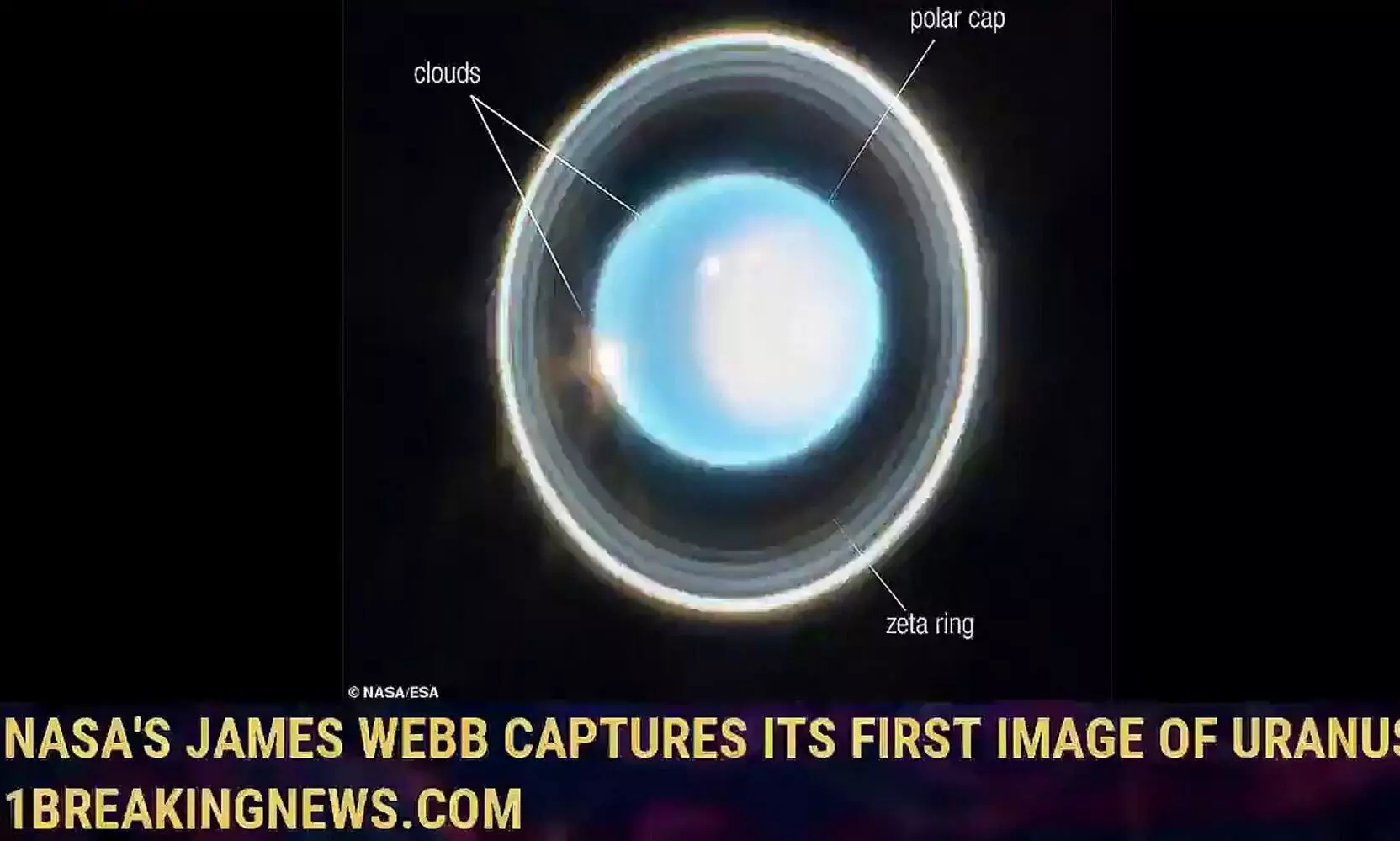
NASA's James Webb Space Telescope captures stunning images of Uranus and its rings
text_fieldsNASA's James Webb Space Telescope has captured a clear and stunning image of the planet Uranus and its rings. This marks the first time in over 35 years that a spacecraft has captured a detailed image of the seventh planet from the sun.
The image captured by the telescope shows Uranus with its distinct rings and bright features, highlighting the planet's unique characteristics as an "ice giant." Scientists believe that most of Uranus' mass is made up of a hot and dense fluid of "icy" materials such as water, methane, and ammonia, which sits above a small rocky core.
Uranus is known for its oddball characteristics, including its 90-degree tilt from the plane of its orbit, causing extreme seasons at its poles. The planet takes 84 years to complete one orbit around the sun, and currently, it is late spring on its northern pole, which is visible in the image captured by the James Webb Space Telescope.
The last time a clear image of Uranus was taken was in 1986 when the Voyager 2 spacecraft visited the planet. However, the current image captured by the James Webb Space Telescope is much clearer and more detailed, giving scientists a better understanding of Uranus' unique features.
While it is currently late spring on Uranus' northern pole, the planet's south pole is currently facing the darkness of space and out of view. The next time Uranus' northern pole experiences summer will be in 2028, providing scientists with an opportunity to study the planet's seasonal changes and unique characteristics further.
The James Webb Space Telescope has already captured detailed images of Neptune, its rings, and moons in 2022, providing scientists with a better understanding of the planet's characteristics. With the recent capture of Uranus, the telescope is poised to uncover more exciting discoveries about our solar system's outer planets.






